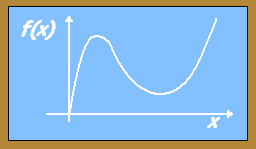Ableitungsregeln - Übung
Bilden Sie die Ableitung...
- ...mithilfe der Produktregel
- \[f_1(x)=x^4\cdot x^3\]
- \[f_2(x)=3x^2\cdot\frac{1}{2}x^4\]
- \[f_3(x)=x^3(x^2-2x)\]
- \[f_4(x)=(x^2-2x)(x^5-3)\]
- \[f_5(x)=(5x^3-7x^2+2x)(0,5x^2-\frac{1}{2}x+2)\]
- \[f_6(x)=x(2x+3)\]
- ...mithilfe der Potenz-und Produktregel
- \[f_7(x)=\frac{x^3}{x^2}\]
- \[f_8(x)=\frac{(2x^2-3x)}{x^5}\]
- \[f_9(x)=\frac{5x^3-2x^2+1}{x^3}\]
- ...mithilfe der Quotientenregel
- \[f_{10}(x)=\frac{3x^2}{7x^3}\]
- \[f_{11}(x)=\frac{(2x^2-2x)}{4x-3}\]
- \[f_{12}(x)=\frac{25x^4-3x^2+2x}{2x^2-3x+1}\]
- ...mithilfe der Kettenregel
- \[f_{13}(x)=(x^2-2x)^4\]
- \[f_{14}(x)=(-3x^7+22x^3)^5\]
- \[f_{14}(x)=(x^3)^{-8}\]
- \[f_{16}(x)=\frac{1}{12x^2-3x+2}\]
- \[f_{17}(x)=\frac{(2x^2+1)^2}{(3x-1)^3}\]
- \[f_{18}(x)=\frac{4x^2+5}{(2x+3)^4}\]

